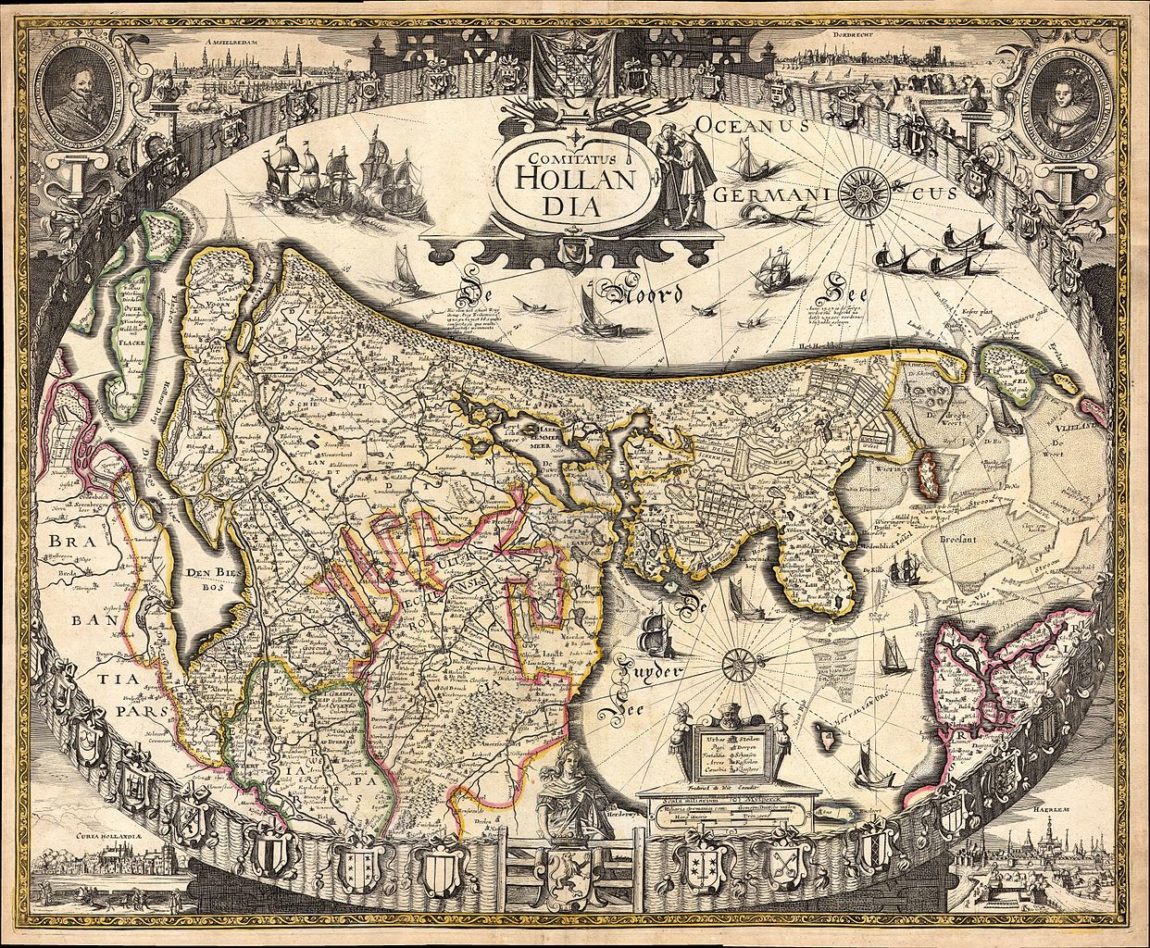Key Takeaways
- Frederik de Wit, a renowned Dutch cartographer, was born circa 1629 in Gouda, Netherlands.
- He is celebrated for his influential cartographic works and his shop “Witte Pascaert.”
- De Wit’s maps and atlases, produced during the Dutch Golden Age, are notable for their detail and artistry.
- His legacy extends to modern collections, with his works preserved in numerous prestigious libraries and museums.
Ah, let me tell you about Frederik de Wit, a name that echoes through the corridors of cartographic history. Picture this: the Dutch Golden Age, a period of flourishing arts, sciences, and trade. Amidst this renaissance, around 1629, in the quaint city of Gouda, Frederik Hendriksz (later known as Frederik de Wit) was born to Hendrik Fredericsz, a humble knife handle maker, and Neeltij Joosten, a merchant’s daughter.
As a youngster, I imagine Frederik’s eyes must have sparkled with curiosity, gazing at maps and dreaming of distant lands. His journey took a pivotal turn when he moved to Amsterdam around 1648, a bustling hub of culture and commerce. In this vibrant city, he opened a printing office and shop named “De Drie Crabben,” later rechristened “Witte Pascaert.” This shop, my friends, wasn’t just a store; it was a beacon for explorers and dreamers, a place where the world’s mysteries unfolded in ink and parchment.
Imagine walking into “Witte Pascaert,” where walls whispered tales of uncharted territories and seas yet to be navigated. De Wit’s maps were not mere tools; they were canvases showcasing the beauty of our world. His first notable works included city views for “Flandria Illustrata,” a masterpiece by Antonius Sanderus. These weren’t just maps; they were stories etched in lines and shades, narrating the glory of cities like Rijsel and Doornik.
By 1659, De Wit had crafted his first self-engraved and dated map of Denmark. His world maps, “Nova Totius Terrarum Orbis Tabula,” were marvels, displaying his skill in merging artistry with accuracy. His atlas series, a kaleidoscope of up to 151 maps, was a treasure trove of knowledge. Can you imagine the thrill of flipping through those pages, each map a gateway to a new adventure?
De Wit’s social ascent was as remarkable as his professional journey. His marriage to Maria van der Way in 1661 not only brought love but also a valuable Amsterdam citizenship. He joined the Guild of Saint Luke, cementing his status as a master craftsman. By 1694, Amsterdam recognized him as a good citizen, a testament to his contribution to the city’s cultural and intellectual fabric.
Now, let’s reflect on De Wit’s legacy, which is as enduring as his maps. His death in 1706 marked the end of an era, but his wife, Maria, kept the beacon of “Witte Pascaert” burning until 1710. His son, choosing a different path, left the legacy in the hands of others like Pieter Mortier and the Covens & Mortier firm, who continued to nurture the seeds planted by De Wit.
As I ponder De Wit’s life, I’m struck by the thought of how one man’s passion for cartography not only charted the physical world but also mapped a path for future generations. His works, housed in the world’s most prestigious libraries, continue to inspire awe and wonder.
Now, let me tell you a little secret. Whenever I hold a map, I feel a connection to De Wit. It’s as if his spirit lingers in every line, every contour, guiding us through the labyrinth of history and geography.
Frequently Asked Questions
- Who was Frederik de Wit?
Frederik de Wit was a Dutch cartographer and artist born around 1629 in Gouda, Netherlands. He is famous for his detailed maps and atlases during the Dutch Golden Age. - What is Frederik de Wit known for?
De Wit is renowned for his cartographic works, particularly his shop “Witte Pascaert,” and his contribution to the world of maps and atlases. - What were some of Frederik de Wit’s notable works?
His notable works include city maps for “Flandria Illustrata,” world maps like “Nova Totius Terrarum Orbis Tabula,” and a series of detailed atlases. - What was the significance of De Wit’s shop “Witte Pascaert”?
“Witte Pascaert” was not just a shop but a center for cartographic excellence in Amsterdam, known for producing and selling high-quality maps and atlases. - Where can I find Frederik de Wit’s maps and atlases today?
De Wit’s works are preserved in many special collections, rare map libraries, and private collections worldwide, including major libraries like the Library of Congress and the Amsterdam University Library.





